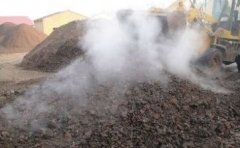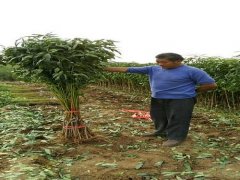Is the best organic fertilizer raw material farm organic fertilizer or commercial organic fertilizer? What are the raw materials of organic fertilizer
What is the difference between farm organic fertilizer and commercial organic fertilizer? Due to the different composition and decomposition of organic matter materials, it is necessary to pay attention to the advantages and disadvantages of organic matter materials, truncate each other, and make the most appropriate deployment and application, which will get twice the result with half the effort. Here are several common organic materials to illustrate their application essentials:

Farm organic manure:
1. Fertilizer (feces):
Pay attention to the amount of application: the fertilizer contains more salts and nitrogen. If the unfermented urine is used fresh, it is prone to fat injury or excessive nitrogen. Long-term use of the solid part and liquid part of the feces should not be excessive.
Suitable for base fertilizer: the fertilizer with high nitrogen content is suitable for use in base fertilizer. In the use of fruit trees, it should not be applied in large quantities before and after flowering, so as to avoid excessive nitrogen or decomposition, resulting in falling flowers and fruits or poor flowering, which should be used earlier.
With other organic fertilizers or plant residues: after the application of fertiliser, it will be decomposed quickly, and the loss of nitrogen can reach 2-30%. The loss is even greater in high temperature and strong wind. More acidic organic matter can be used to stabilize ammonia nitrogen and reduce ammonia loss. The fertilizer application method of nutrient balance can not be ignored, so the application of organic fertilizer should also pay attention to the balance of nutrients. Plant residue is a good material for absorption and adhesion of feces and urine of livestock and poultry animals, and it is also beneficial and convenient for the application of organic fertilizer.
Pay attention to the hygiene and safety of application: the use of organic manure of animal manure should be careful not to be applied on the soil surface, which is prone to bedbugs. If the treated manure can reduce this disadvantage, but it needs to be covered by covering or turning over the soil. In particular, the use of organic fertilizers in vegetable fields should pay attention to hygiene and safety to prevent the growth of parasites and bacteria.
2. Residue and composting:
Crop straw residue (such as rice straw, corn stalk, etc.) is applied or injected into the soil as early as possible before sowing, which can prevent nutrient elements (such as nitrogen, trace elements, etc.) from being absorbed and fixed by decomposing microorganisms, otherwise, seedlings will be affected by residue. causing lack of nutrition and yellowing. Therefore, the application of immature crop straw residue should be combined with organic nitrogen fertilizer with high nitrogen content.
In fields with poor drainage, large amounts of crop residue or immature compost should be reduced. in poorly drained soil, organic matter is easy to decompose into harmful substances under anaerobic (lack of oxygen), which will cause damage to crop roots. Grass stalks with diseases and weed seeds should not be applied directly, lest pathogens and weed seeds grow, otherwise the loss outweighs the gain.
3. Green manure:
The selection of green manure crops should be in line with seasonal growth. green manure in winter, such as purple manure, cauliflower, green pea, alfalfa, etc., and green manure in spring and summer, such as Sesbania, solar hemp, etc., need to grow well in the suitable season.
The selection of green manure crops needs to cooperate with soil and next-stage crops: legume green manure is most suitable for soil application that lacks nitrogen fertilizer and organic matter, especially in dry farming fields, legume green manure, and paddy fields with more nitrogen fertilizer, because legumes increase too much nitrogen fertilizer, it is easy to increase the ineffective tillering of rice, so planting legume green manure in paddy fields should cooperate with soil to reduce the application of nitrogen fertilizer, otherwise it is also prone to the problem of excessive nitrogen or rice fever.
If the farmland with poor drainage is careful to use green manure, we can choose non-legumes, such as rape, radish, etc., and it is better when planting it when it is aged after flowering, because it is too tender and decomposes too quickly, it is easy to cause nutritional competition or toxicity to the growth of crop seedlings.
2. Commercial organic fertilizer:
1. Peat:
Peat is a kind of organic fertilizer which has been used for a long time in foreign countries. Peat is the product of long-term deposition and transformation of ancient organisms, which decomposes very slowly in soil after application, and is the most effective material for the increase of long-term soil organic matter. The degree of maturity or transformation of peat products varies more or less from place to place, because peat contains a high amount of soil essence-humic acid, peat also contains xanthic acid and humus, high content of organic matter, ash should not be too high. Peat is light and acidic, but commercial products have been neutralized and most of them have adjusted the nutrients contained in peat, which can be regarded as the most stable and indecomposable soil improver. To adjust the nutrient content of peat is to increase the organic material that is easy to decompose, in order to make up for the need that the peat is not easy to decompose. Peat moss is often the product of plants immersed in water for many years, which has a good function of loosening soil and retaining water, but unlike the "peat soil" formed by paleontology in tens of thousands of years, peat moss and peat soil are good soil modifiers.
2. Animal waste:
Including animal manure (chicken manure, pig manure, sheep manure, etc.), waste residues (fish meal, bone meal, feathers, fur, etc.), etc., depending on the composition of feed and the amount of added materials, the quality will be greatly affected. For example, if too much rice is added to chicken manure, it will affect the content of ingredients and pay attention to buying quality. Fish dregs and feathers are high in nitrogen. Generally, feathers contain very high protein, which can be regarded as a source of nitrogen fertilizer. In commodities, proteins are decomposed into amino acids and become nitrogen fertilizers of amino acids. Bone meal contains high calcium phosphate fertilizer, which belongs to organic phosphate fertilizer which decomposes slowly. Organic materials such as pig manure should pay particular attention to the excess of heavy metal copper, as the addition of chemicals in some feeds will affect the quality of feces.
3. Plant and microbial residues or wastes:
Including the difference between decomposed (or semi-decomposed) and undecomposed compost, the quality of compost varies according to the material used, nutrient content, and maturity. The general maturity is based on the ratio of carbon to nitrogen, and the lower the ratio of carbon to nitrogen is, the more mature the compost is.
Yeast powder is the most common dry microorganism and contains a large amount of nitrogen, which can be regarded as one of the important microbial materials and can also be used as a promoting material for composting fermentation. The common unrotten organic fertilizers are bean cake, various seed dregs, fiber wood chips and so on. Bean cake residue is high in nitrogen fertilizer, and hard shell residue is not easy to decompose organic matter, which can be regarded as a good long-term soil improver.
4. Extract or concentrate organic fertilizers:
There are organic compounds extracted from animals, plants and microorganisms in the form of liquid or concentrated powder, containing all kinds of organic matter and nutrient elements (including trace elements), and even extracts such as enzymes, plant hormones, antibiotics and so on. there are common extracts such as seaweed and fish, which can be regarded as comprehensive nutritional agents.
- Prev

What is microbial fertilizer? How to use microbial fertilizer and what are the advantages of microbial fertilizer?
What is microbial fertilizer? The most essential and remarkable feature of microbial fertilizer is that it is a living and living fertilizer. How did it come into being? Let's take a look at it. I. what is microbial fertilizer? microbial fertilizer means that it contains
- Next

What is organic matter in fertilizer? What are the types of organic matter in fertilizer?
Organic fertilizer selection and application technology, do you know if you don't know, then take a look at this article, understand it. This will allow for better crop fertilization. Selection according to soil conditions can be based on soil samples sent to the improvement site for analysis of soil organic matter
Related
- Fuxing push coffee new agricultural production and marketing class: lack of small-scale processing plants
- Jujube rice field leisure farm deep ploughing Yilan for five years to create a space for organic food and play
- Nongyu Farm-A trial of organic papaya for brave women with advanced technology
- Four points for attention in the prevention and control of diseases and insect pests of edible fungi
- How to add nutrient solution to Edible Fungi
- Is there any good way to control edible fungus mites?
- Open Inoculation Technology of Edible Fungi
- Is there any clever way to use fertilizer for edible fungus in winter?
- What agents are used to kill the pathogens of edible fungi in the mushroom shed?
- Rapid drying of Edible Fungi

